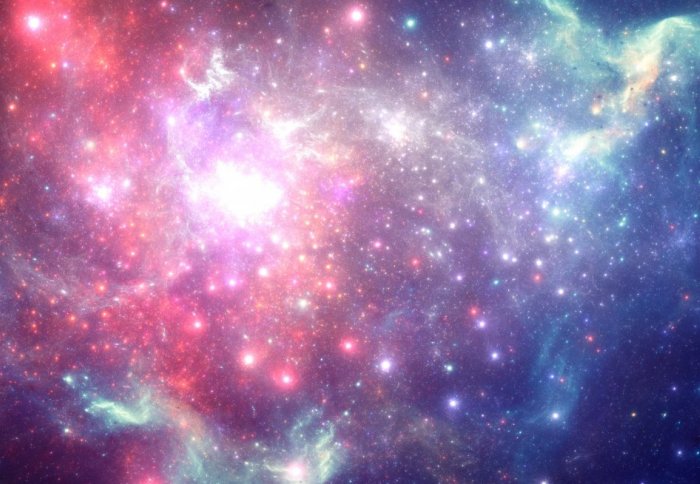An international team of over 200 astronomers from 18 countries has presented a new radio sky map of unprecedented sensitivity. The survey was conducted using the Low-Frequency Array (Lofar) radio telescope network and enabled, among other things, the discovery of hundreds of thousands of previously unknown galaxies. In addition, the observations presented in a special issue of the journal “Astronomy & Astrophysics” shed new light on black holes, interstellar magnetic fields, and galaxy clusters.
1,900-kilometer bowl
Lofar is a vast European network of radio telescopes connected by a high-speed fiber-optic network, combining their measurement signals into a single signal. Powerful supercomputers transform 100,000 individual antennas into a 1,900-kilometer virtual receiving dish. Lofar works in the hitherto mostly unexplored frequency ranges between about 10 to 80 megahertz and 110 to 240 megahertz. It is controlled by the Astron research facility in the Netherlands and is considered the world’s leading telescope of its kind.
The most important results
With the help of Lofar, scientists have created a new sky map that could detect hundreds of thousands of galaxies that were previously unknown. Most of the Star Islands are at extremely far distances; their radio signals have had to bridge billions of light-years to reach Earth. In addition, radio waves allow us to explore cosmic phenomena that can not be observed in the wavelength range visible to humans.
Black holes
Thus, the radio telescope can also detect radiation from the vicinity of black holes. Most are supermassive black holes, millions of times more mass than the sun. When gas falls on black holes, they emit jets of material, which are visible at radio wavelengths. Due to the remarkable sensitivity of Lofar, the scientific teams were now able to show that these jets are present in every giant galaxy and that black holes are continually growing.
“With Lofar, we want to find out what influence the black holes have on the galaxies in which they sit,” says Marcus Brüggen, an astrophysicist at the University of Hamburg. In addition, the researchers hope for clues as to where these gigantic gravity monsters come.
Cosmic magnetic fields
With the radio radiation that Lofar receives, cosmic magnetic fields can also be measured. For example, researchers from Germany have measured the magnetic fields in the halos (shells) of galaxies. They were able to show that there are also enormous magnetic structures between galaxies. Thus theoretical assumptions could be confirmed. “Lofar provides evidence that the entire space between the galaxies could be magnetic,” said Rainer Beck of the Max Planck Institute for Radio Astronomy in Bonn.
Merging galaxy clusters
The combination of two groups of galaxies generates radiohalos millions of light-years in size, as Amanda Wilber of the University of Hamburg Observatory explains: “High-speed elementary particles cause radiohalos, so we can explore which cosmic accelerators they use Generate particles and what drives them. ”
“When galaxy clusters merge, huge shockwaves are created, and Lofar allows us to track down their radio emission, thereby learning a lot about the gas at the edge of the giant galaxy clusters,” adds Matthias Hoeft from the Thuringian State Observatory in Tautenburg.
Gigantic amounts of data for high-quality images
Creating low-frequency radio sky maps requires considerable telescoping and computation time, and requires large teams to analyze the data. Lofar produces a massive amount of data – we have to process the equivalent of ten million DVDs. This places the highest demands on software and hardware and is only possible through an international and interdisciplinary team, “says Dominik Schwarz from the University of Bielefeld and representative of Germany to the steering committee of Lofar.
The 26 works published in a special edition of “Astronomy & Astrophysics” are based on only about two percent of Lofar’s planned observations. The scientists now want to map the entire northern celestial sphere.




